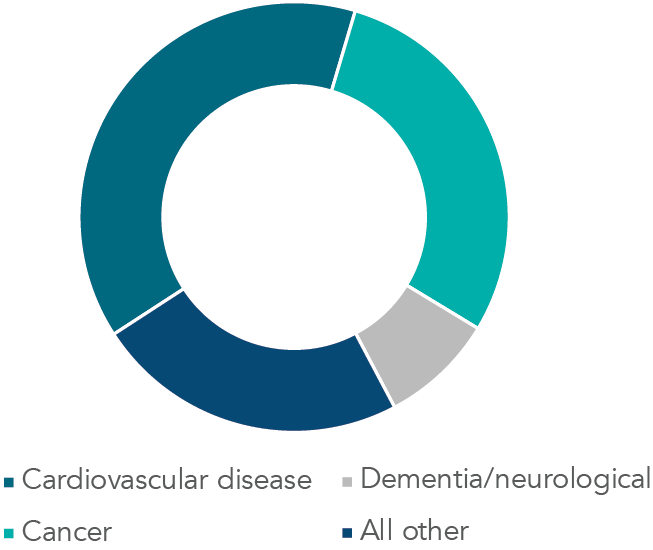Take a step back from the individual cases that you see daily and look at mortality from a population perspective. That is how the SCOR actuaries have asked us to assist them in determining future mortality.
Obviously, future mortality is crucial in pricing of life insurance products, annuities and pension liabilities. In order to provide the best information, we embarked on an effort to collaborate with medical experts and get their perspectives on what the future holds in their areas of expertise.

The three most common causes of death in the US are cardiovascular disease, cancer and dementia/ neurological, so those were the specialties that we engaged.
We had identified a number of “drivers” (trends in behavior, technology, medical advances, etc.) that had likely impacted mortality during the last 15 years or so. Data on mortality trends over the past 15 years was provided to the medical experts so they could compare their knowledge of drivers to effects on mortality.
The medical experts were then asked to project if those drivers were the correct ones and if they would continue to drive changes (both good and bad) into the future. Experts were asked to estimate the amount of change and to suggest any new drivers that might be on the horizon.
As an example, most cardiovascular experts agreed that the reduction in smoking during the past few decades was a major driver of the decrease in cardiovascular deaths. However, reductions in cardiovascular death rates have leveled out more recently. And the question is what will the next major driver be? Will increasing obesity reverse the gains previously made? Will vaping increase and claw back at least a part of the mortality improvements due to smoking cessation?
The opinions of the experts were collected through surveys and interviews. These results were then analysed with increased weight given to specialists in the fields examined. Competing causes of death were also considered (e.g., someone surviving a myocardial infarction may then develop cancer). Overall improvements were predicted in mortality from most causes of death. The information was ultimately used by the actuaries to improve their models of insured lives mortality.
Our Spring edition of SCORviews will include an article on this and another expert judgement study that SCOR Global Life in the Americas conducted as part of our Global Mortality Improvement initiative.

